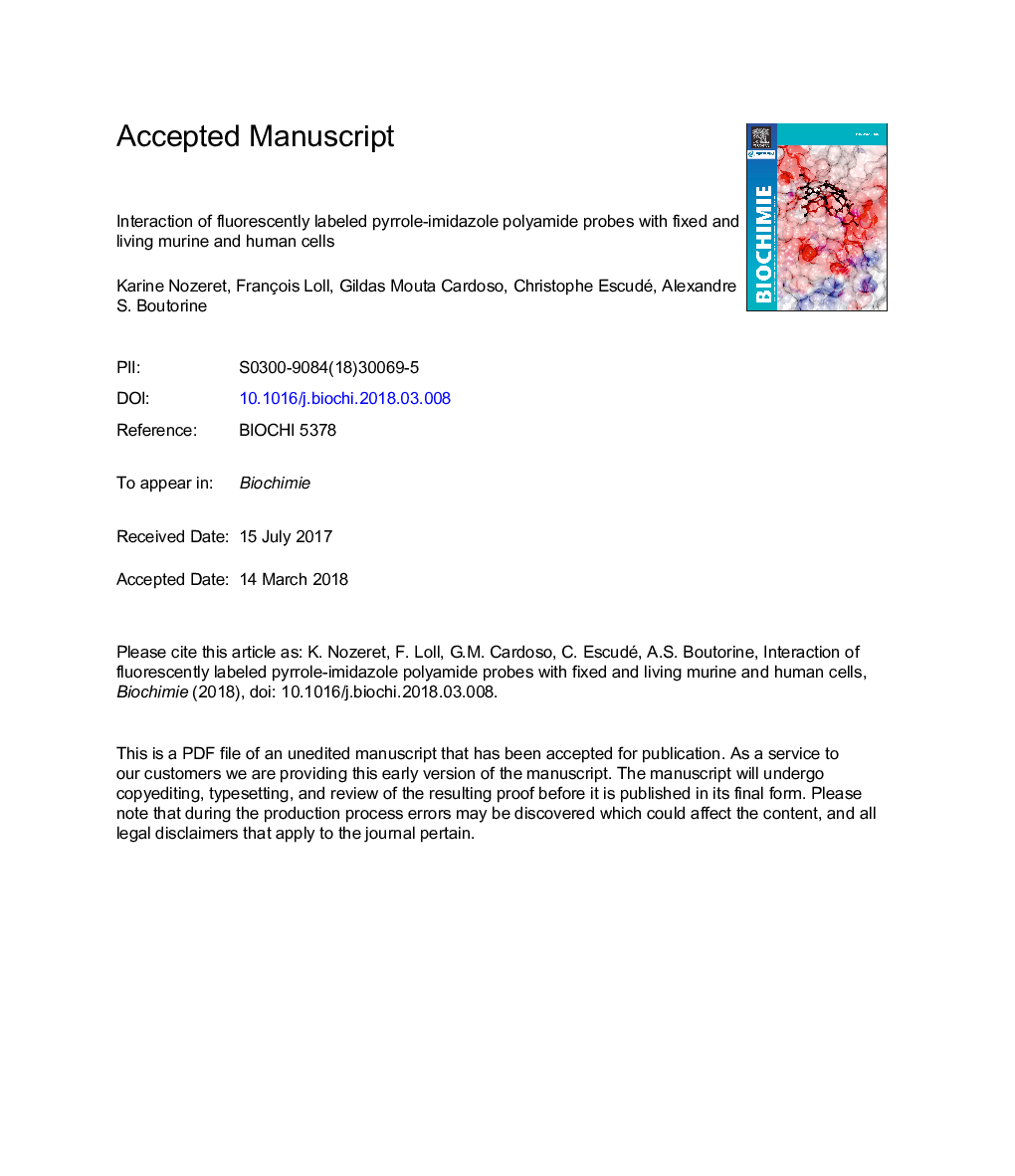| Article ID | Journal | Published Year | Pages | File Type |
|---|---|---|---|---|
| 8304175 | Biochimie | 2018 | 14 Pages |
Abstract
Pericentromeric heterochromatin plays important roles in controlling gene expression and cellular differentiation. Fluorescent pyrrole-imidazole polyamides targeting murine pericentromeric DNA (major satellites) can be used for the visualization of pericentromeric heterochromatin foci in live mouse cells. New derivatives targeting human repeated DNA sequences (α-satellites) were synthesized and their interaction with target DNA was characterized. The possibility to use major satellite and α -satellite binding polyamides as tools for staining pericentromeric heterochromatin was further investigated in fixed and living mouse and human cells. The staining that was previously observed using the mouse model was further characterized and optimized, but remained limited regarding the fluorophores that can be used. The promising results regarding the staining in the mouse model could not be extended to the human model. Experiments performed in human cells showed chromosomal DNA staining without selectivity. Factors limiting the use of fluorescent polyamides, in particular probe aggregation in the cytoplasm, were investigated. Results are discussed with regards to structure and affinity of probes, density of target sites and chromatin accessibility in both models.
Related Topics
Life Sciences
Biochemistry, Genetics and Molecular Biology
Biochemistry
Authors
Karine Nozeret, François Loll, Gildas Mouta Cardoso, Christophe Escudé, Alexandre S. Boutorine,
